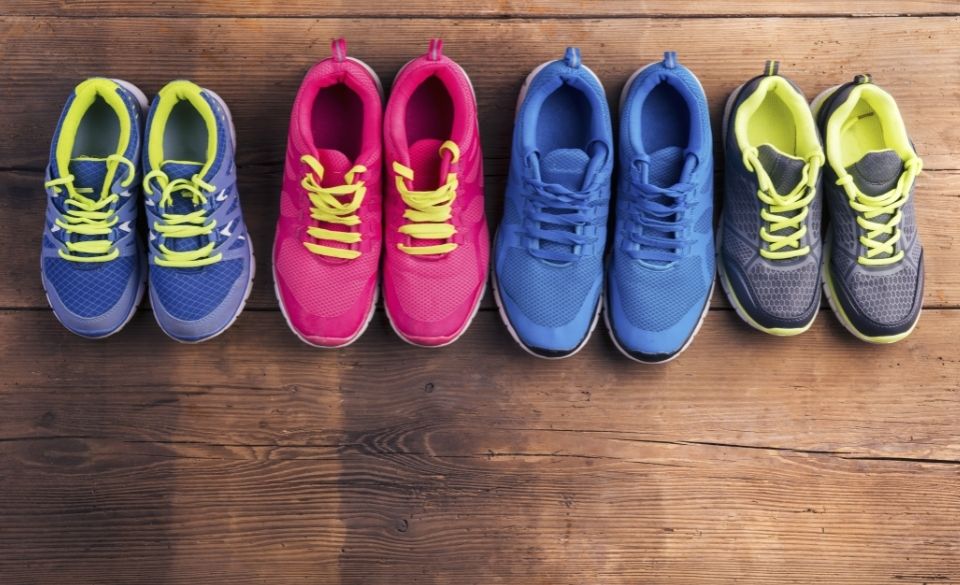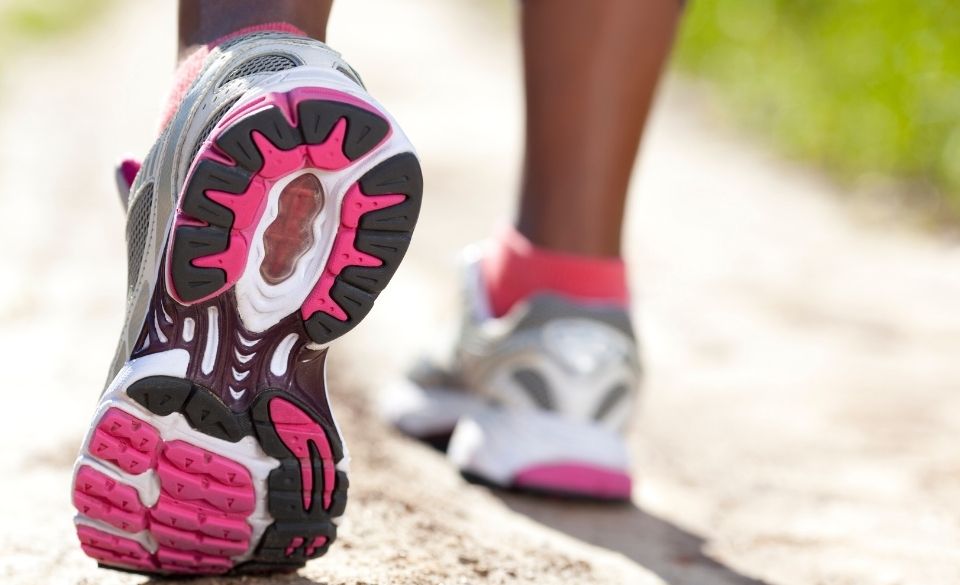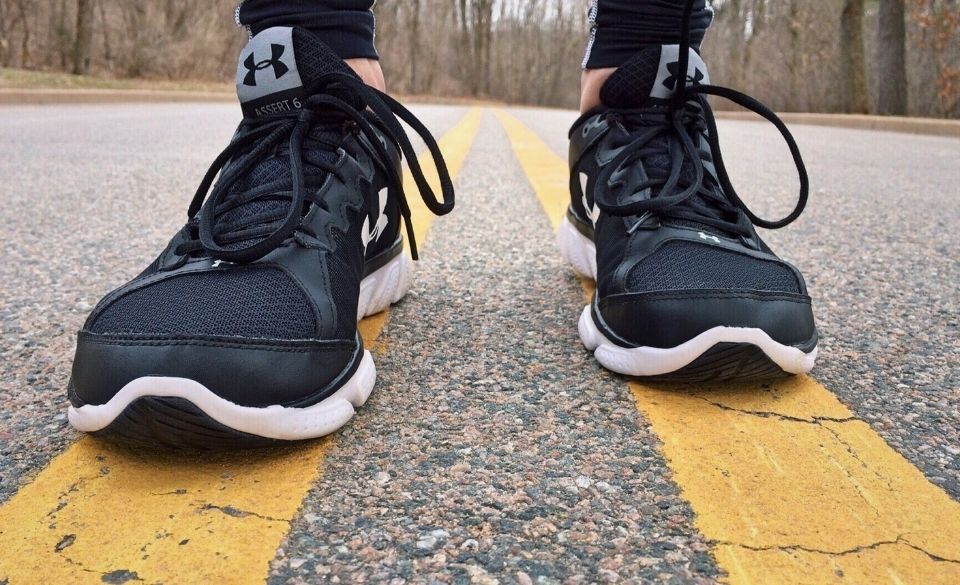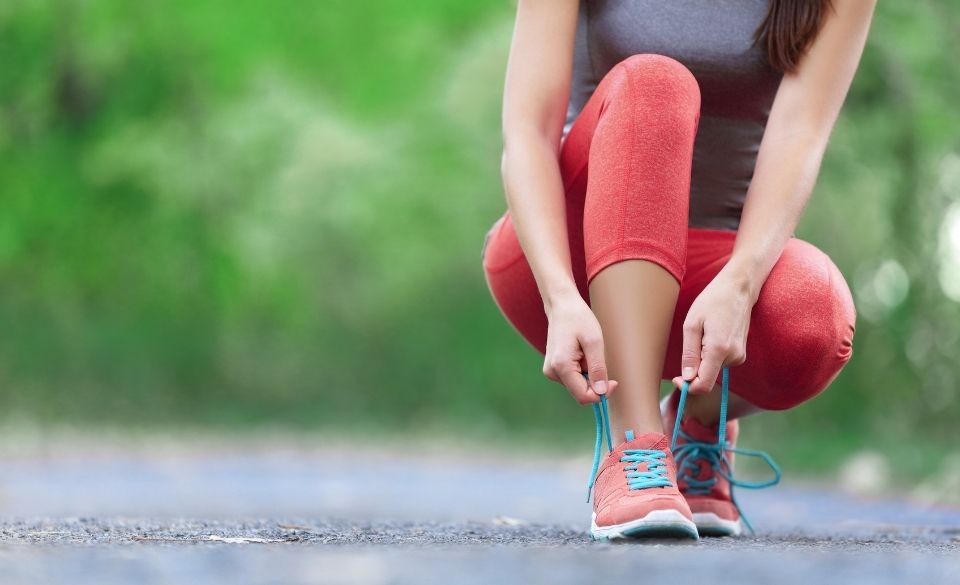
How to Choose the Right Running Shoes for Your Feet
Page Contents
Your running shoes should fit is like a second skin. A lightweight, breathable, snug fit that feels like it’s part of your feet. When you are training every day it is important to choose the right running shoes for your feet. Otherwise, you may end up with a range of niggles and injuries.
Knowing how to choose the right running shoes for your feet requires an expert opinion. So, finding the perfect pair of running shoes can be difficult – especially if you don’t know what type of shoes you need.
So keep reading on to find out more about how to find the perfect running shoe.
Here are some tips from our experts on finding the perfect pair.
How to Choose the Right Running Shoes for Your Feet
It is important to know the right size of the shoe from the start. Many people purchase shoes that are either too small or too narrow for their feet.
Generally, most people think that shoes should feel tight and snug. However, picking shoes that are too narrow or too tight can lead to muscle and tendon injuries in the future.
Since running shoes are one of the most important accessories for us, we must base our choice on the fit and feel of the shoe rather than the look. Picking a running shoe based on looks can lead to wearing a shoe that doesn’t fit you correctly. One should always go with how they feel and how well they fit your specific needs.
Here are some tips for picking the right running shoes:

How To Pick The Right Running Shoes
– Each pair of running shoes should provide support and stability to your feet based on your running gait. This helps to prevent injuries from incorrect landing.
– Make sure you get your feet measured correctly by using a Brannock device. Using a Brannock device will help you get the correct length and width of your foot. If a new pair of running shoes are too big or wide, it can end up causing damage to your toes and top of foot pain from tightening them too much.
– Proper footwear is important to avoid long-term complications like shin splints, tendonitis, ankle sprains, heel pain, and other running injuries. Terrible pain can happen when you wear a pair of shoes that don’t fit right or offer little support for your running style.
– Having your running technique analysed can help you find out if you are a supinator, pronator, or are a neutral runner. This will help you choose the correct type of shoe for your style. It will also help you find out if you have any imbalance issues that may cause injuries in the future.

How to Buy Running Shoes – What to stay away from
When buying running shoes, it’s crucial to make sure they fit properly. Unfortunately, it can be hard to find out if the shoes you just purchased will hurt your feet and cause pain in the long run. So, the best way to evaluate whether a shoe is comfortable for you is by taking a short run in it.
The first run you should do should be no longer than 20 minutes. Doing so will help you get a general feeling for the shoe and any discomfort you may experience.
To help you make sure you purchased the right pair we have listed a few factors that scream your running shoes is not right for you:
Blisters on the ball of your feet
Blisters on the ball of your feet are signs that you have purchased the wrong fit. Typically if you experience blisters on the balls of your feet, the shoes are too big. Running in shoes that are too big allows for your forefoot to slide on the inner sole, causing irritation and blisters. If the shoes you purchased are in fact the correct size, try using a different lacing pattern to help stabilize the foot in the shoe. Other tips include:
1) Wear socks with your shoes – This will help prevent blisters from developing.
2) Get a professional fitting at the store – You should go to a store that specializes in professional fittings or has technicians who offer them.
3) Lace your shoes to help prevent any movement between the inner sole and feet.
Numbness on top of your feet
If you are experiencing numbness on top of your feet, it is a good idea to check the fit of your running shoes. Often numbness comes from overtightening your shoes. Other factors that can cause numbness on the top of your foot are shoes that are too tight or too small. Usually, any type of shoe that affects blood flow in the feet will cause numbness. So if you experience this within your first few runs, you need to change models.
Pain in heel from running shoes
Pain or discomfort in the heel or bottom of the foot is a symptom of plantar fasciitis or heel spurs. Plantar fasciitis is a painful condition where the ligament on the bottom of your foot gets inflamed. A poor fit with shoes can cause this. They can also be caused by long-term injury or nerve problems. If you experience symptoms of plantar fasciitis within the first few runs, you should replace your shoes with another model.
Blisters on your toes
When you start to feel a blister on your toes, it’s time to take off your shoes and find the right fit. Blisters on your toes indicate that your running shoes are not the right fit; either it is too loose or too tight. They usually occur when you run in a shoe that is too big or small or the shoe doesn’t have proper arch support.
Black toenails
One method to figure out if your running shoes are the right fit is by looking at your toenails. If you notice any of your toes getting bruised or becoming black, the shoes are too small and need to be replaced. Also, your feet should not slip inside the shoe when it’s on; it should not be too tight or too loose either.
Heel slippage
Heel slippage is one of the common signs that indicate a shoe is too big for your feet. Whether you are running uphill, on the flat, or downhill, there should be no heel slippage. If the shoe is the correct size and you still experience heel slippage, try changing to a different model with different heel support. Alternatively, look at how you lace your shoes. Changing the way you lace your running shoes can help prevent any movement inside the shoe.
Blisters on your heel
Blisters call for immediate attention because they are caused by friction between the shoe and your feet. Red marks or skin bubbles on your heel are a sign that your shoes aren’t supporting your heel and forefoot well enough. Blisters are caused when the skin’s protective barrier gets damaged from friction and rubbing against the inside of a shoe. The friction causes tiny tears in the skin, which leads to fluid build-up on the bottom of your foot and then bubbles, which can cause blisters.
Pain in your shins
Pain in your shins (shin splints) can sometimes be caused by incorrect shoes. Shoes that don’t offer the correct support can end up placing more stress on the lower leg muscles and bones. If you experience sharp pain in your shins, move to a shoe that offers more cushioning. Alternatively, check out your running style to see whether your running gait is the cause of the issue.

How Do You know If Your Running Shoes Fit You Correctly?
It is essential to know that running shoes are the right fit because they will help you avoid injuries and prevent any blisters or black toes when running. When you buy a pair of running shoes, how can you be sure that they are the right fit for you?
Here are some tips to help you purchase the correct running shoes.
– Find the accurate size of your feet with a reliable measuring tape or Brannock device. Alternatively, place your heel against a wall on a piece of paper and draw around your foot. Then measure the length and width of your foot.
– When measuring your feet, check to see what type of arch you have. Doing so will give you a good idea of whether you pronate, supinate, or are a neutral runner.
– Have your running technique analysed by a professional. they then can recommend the right shoe for your running style.
– Check your past running shoes and the wear on the sole. This will help you know whether you are a heel striker, mid-foot or forefoot runner. It will also show whether you have been pronating during your landing. This can be seen by placing the shoe on a flat surface and looking at the angle of the heel from behind. If the heel is bent towards the inner side of the shoe, you have been pronating and vice versa.



